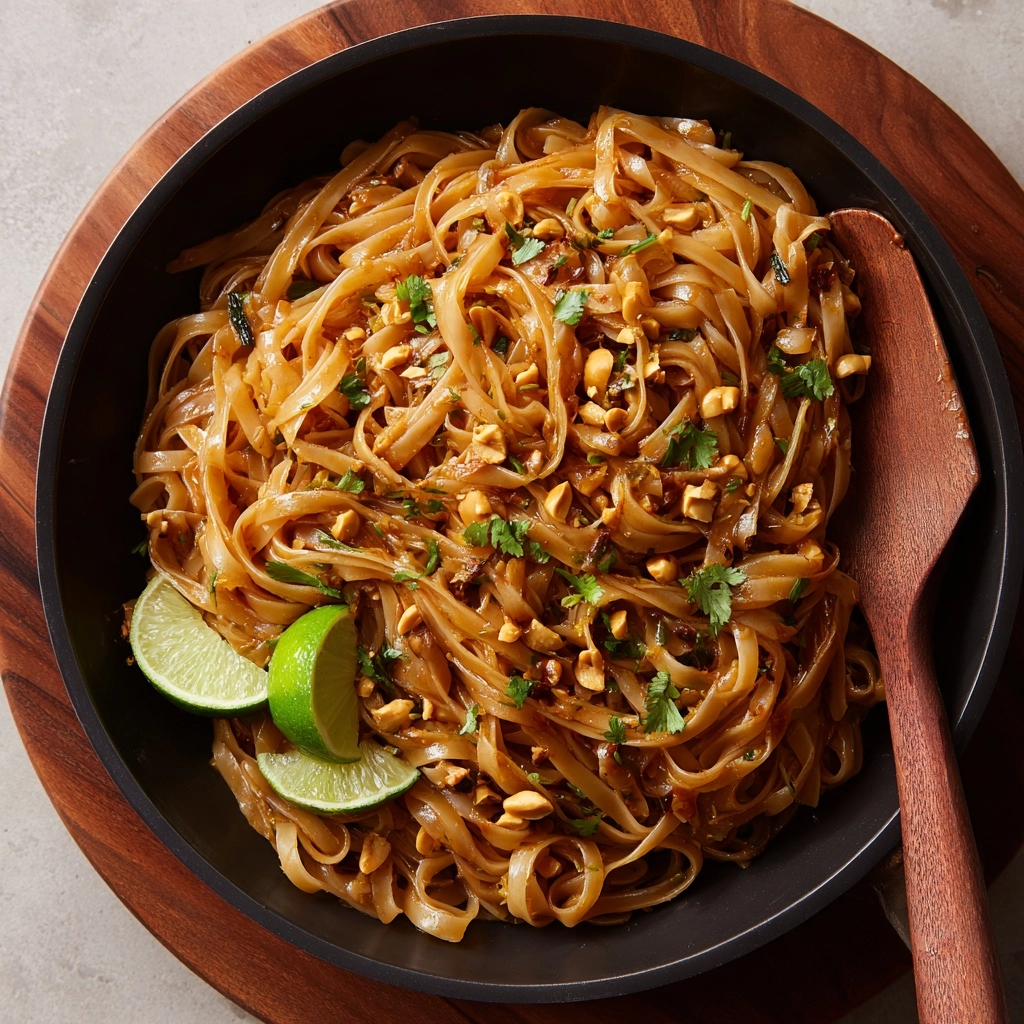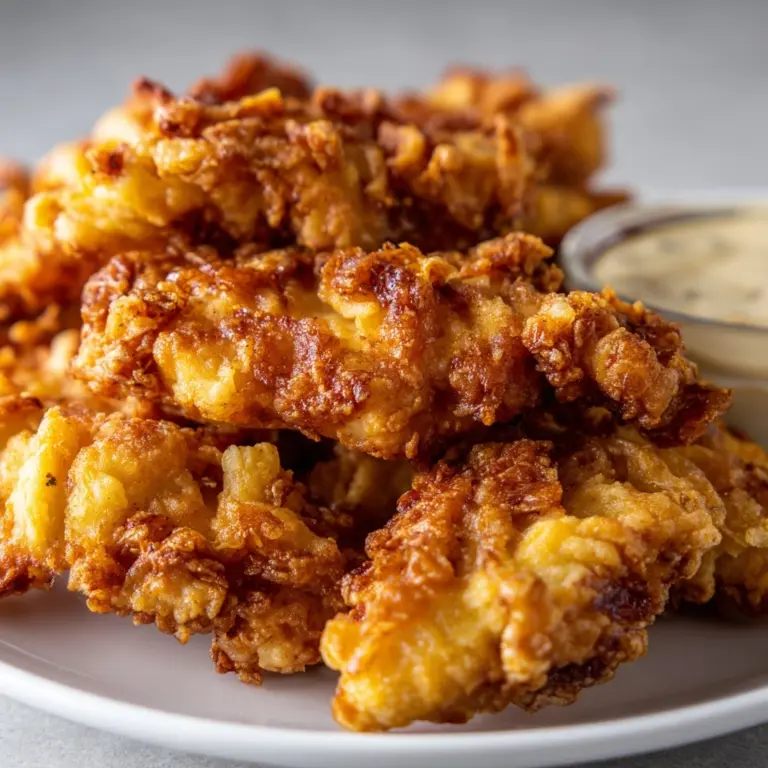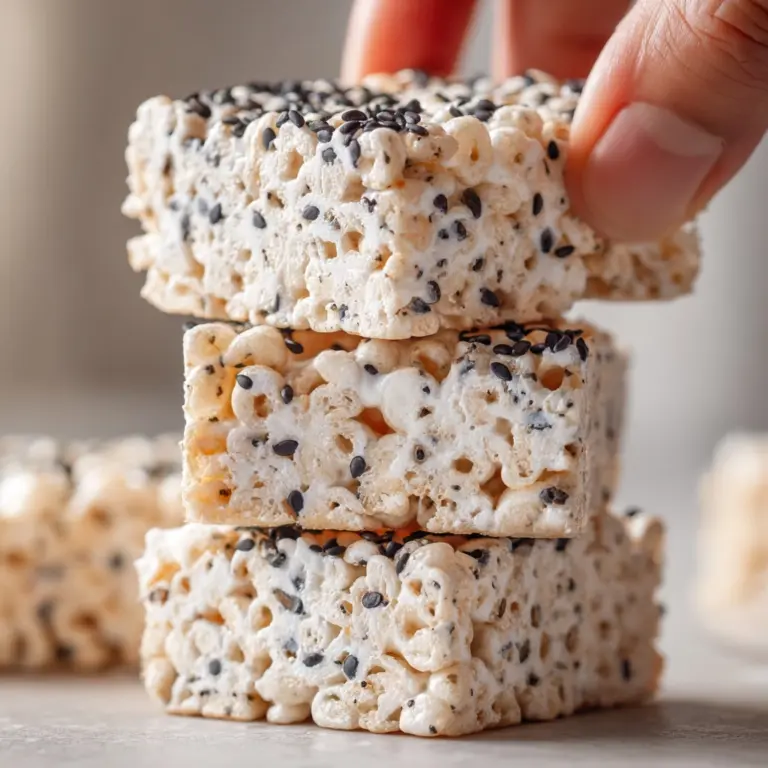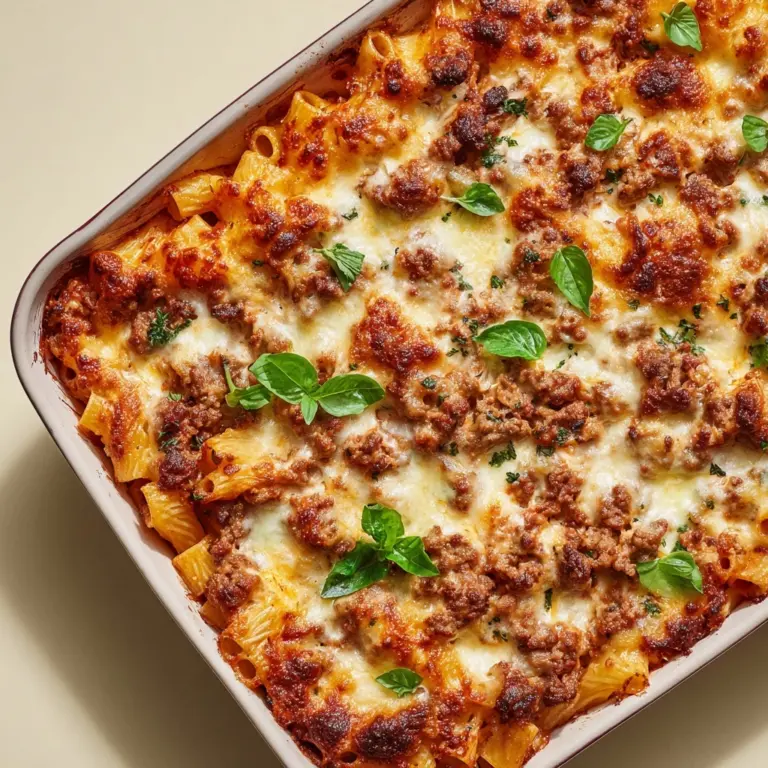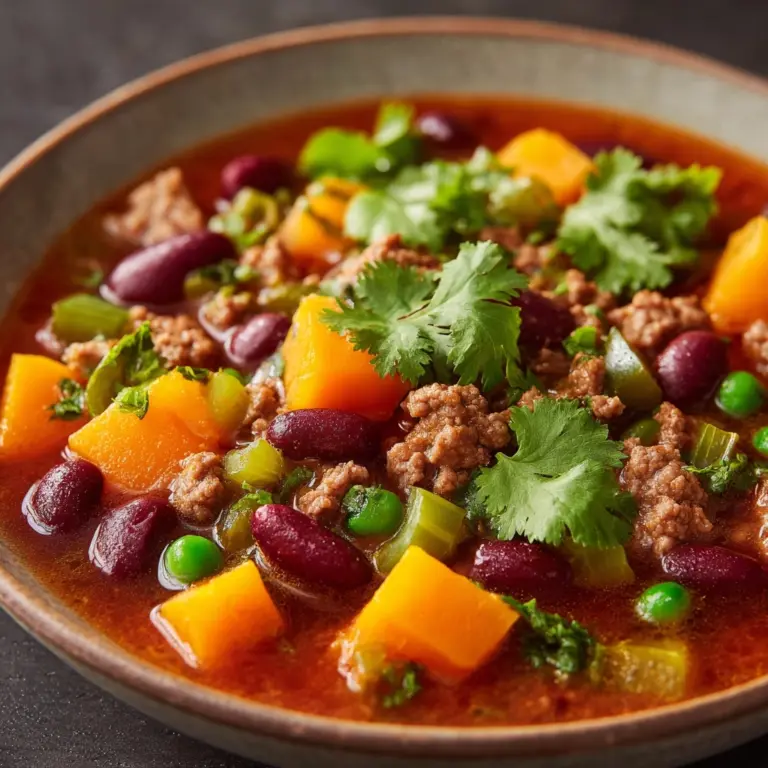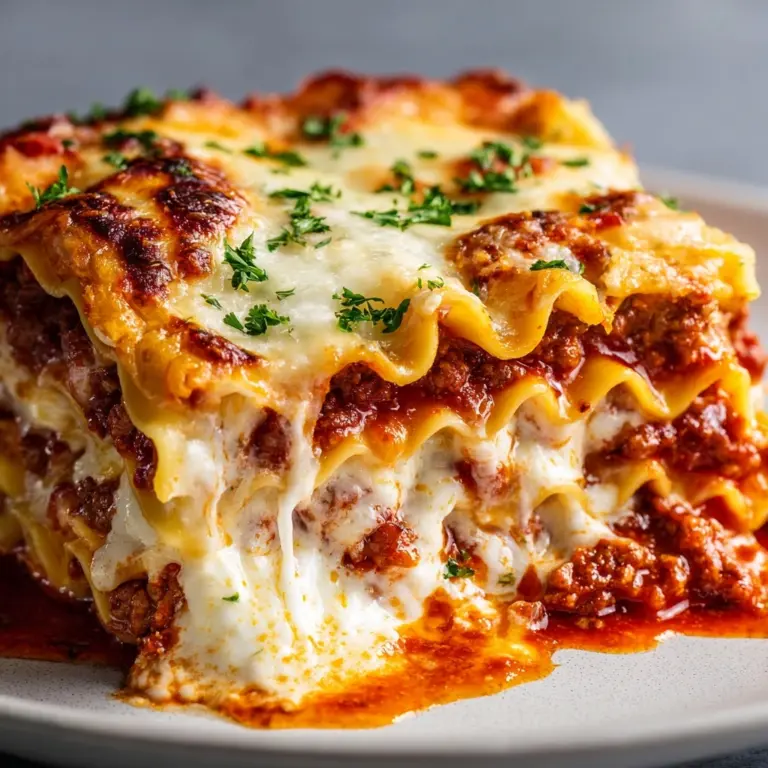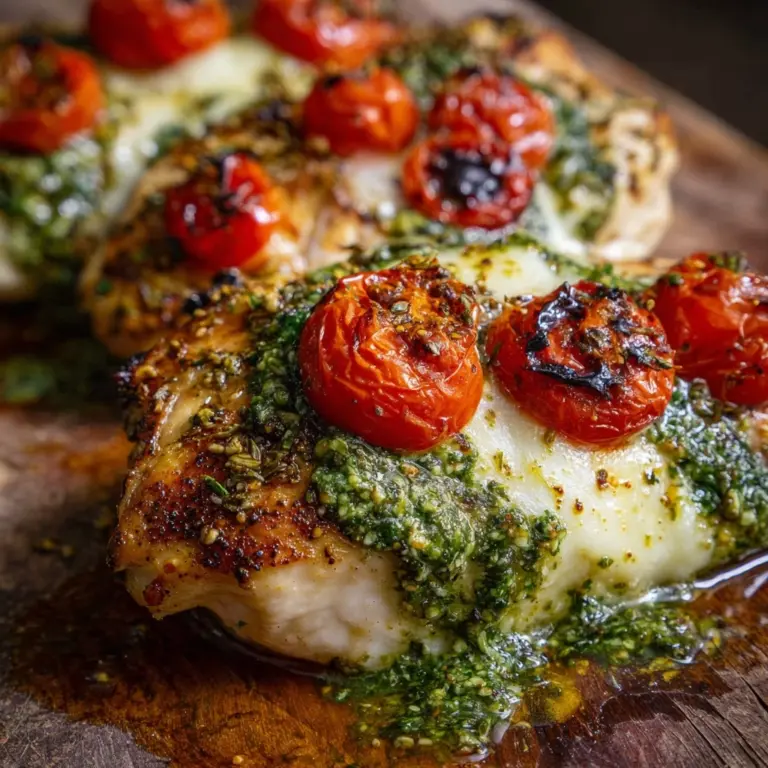Bursting with color, crunch, and tangy-sweet flavor, Vegetable Pad Thai is the kind of dish that instantly transports you to a bustling Thai street market. It’s a fabulous weeknight dinner because it’s fast, fresh, and endlessly adaptable—plus, there’s just something magical about twirling glossy rice noodles and scooping up vibrant veggies in every bite. Whether you’re a longtime noodle-lover or new to Thai cooking, this recipe delivers everything you crave, all in under thirty minutes!
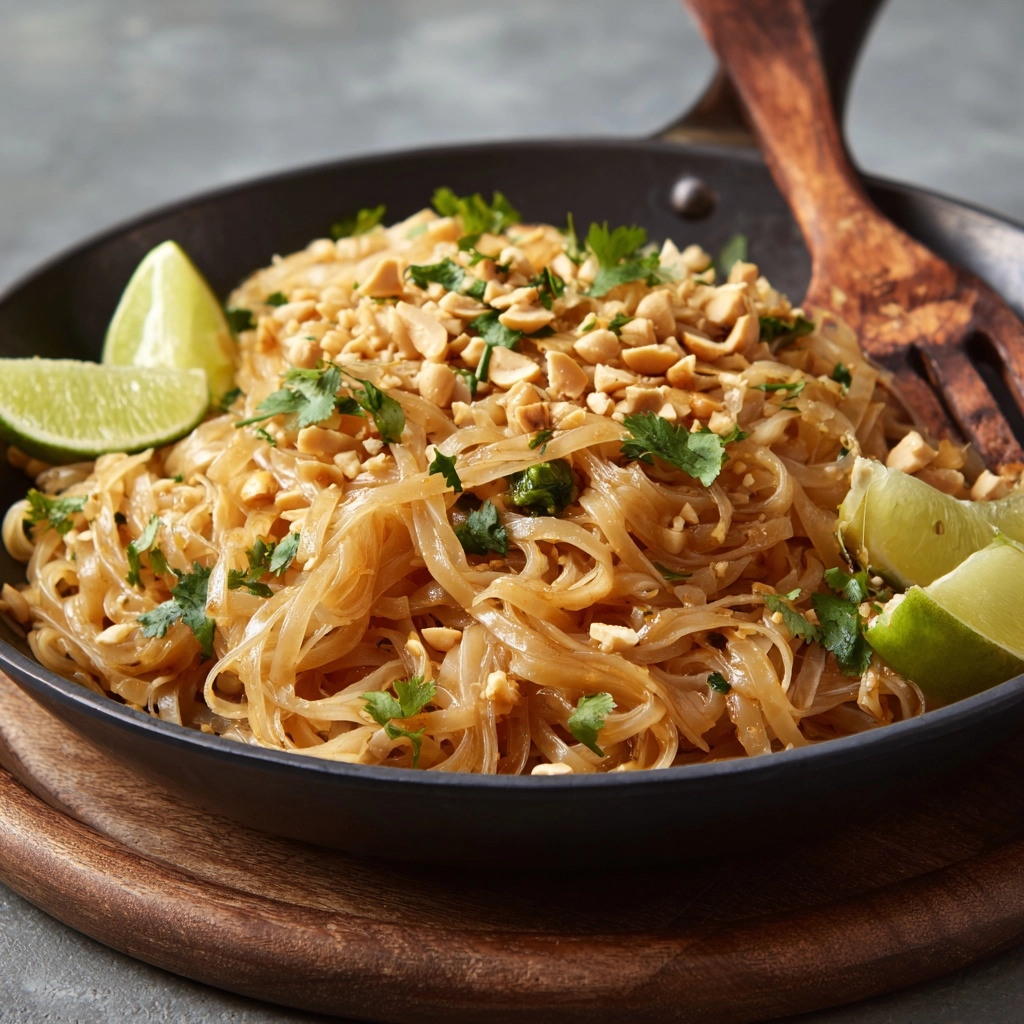
Ingredients You’ll Need
What makes Vegetable Pad Thai shine is its perfect medley of pantry staples and crisp produce. These ingredients come together to create a harmony of flavors and textures—nothing is superfluous, and each one earns its place in the pan!
- Rice noodles (8 oz): These soft, silky noodles are the classic base, soaking up all those irresistible Thai flavors while providing the perfect chew.
- Vegetable oil (2 tablespoons): Neutral and light, this helps everything sizzle without overpowering the delicate sauce.
- Garlic (2 cloves, minced): A burst of aromatic goodness that awakens the whole dish from the very first step.
- Shredded carrots (1 cup): Adds a subtly sweet crunch and vibrant orange pop you’ll love in every forkful.
- Red bell pepper (1, thinly sliced): The sweetest of peppers, these bring juicy crispness and glorious color.
- Bean sprouts (1 cup): A refreshing, cool finishing touch that adds a delightful snap.
- Green onions (2, sliced): Mild, herby, and bright, they round out the flavor profile beautifully.
- Eggs (2, lightly beaten): Give the dish its trademark richness and pop of yellow.
- Roasted peanuts (1/4 cup, chopped): For irresistible crunch and nutty depth in every bite.
- Chopped cilantro (2 tablespoons): A finishing touch of herbal freshness—don’t skip this if you can help it!
- Lime wedges: A quick spritz before eating brings the whole dish to life with zesty brightness.
- Soy sauce (3 tablespoons): The salty backbone of the sauce, infusing each noodle with umami richness.
- Tamarind paste (1 1/2 tablespoons): The essential tangy note that makes the sauce uniquely Pad Thai, though substitutions work if you’re in a pinch.
- Brown sugar (1 tablespoon): Balances the tang and salt—just a touch is all you need.
- Lime juice (1 tablespoon): For more citrus zing tucked away in the sauce itself.
- Sriracha (1 teaspoon, optional): Adds gentle heat—feel free to adjust up or down to suit your tastes!
How to Make Vegetable Pad Thai
Step 1: Prep the Noodles
Start by cooking your rice noodles according to the package instructions. Once they’re al dente, rinse them with cold water to prevent sticking and set them aside. This single step has a big impact—the noodles will stay lovely and separate, ready to soak up every drop of sauce later.
Step 2: Mix Up Your Signature Pad Thai Sauce
In a small bowl, whisk together soy sauce, tamarind paste, brown sugar, lime juice, and sriracha if using. The tamarind brings a tang you simply can’t get anywhere else, and even the quick whisking lets those distinctive aromas waft up and build anticipation. If you’re substituting, now’s the time to grab that rice vinegar and a little extra lime.
Step 3: Sauté Garlic and Eggs
Place a large skillet or wok over medium heat and add the vegetable oil. When the oil shimmers, toss in the minced garlic and let it cook for 30 seconds until it’s golden and aromatic. Push the garlic to one side, pour in the beaten eggs, and scramble until they’re just set—this creates velvety ribbons of egg that play so nicely against the noodles.
Step 4: Add the Veggies
To the pan, add the shredded carrots, red bell pepper, and green onions. Stir-fry for about three to four minutes, just until they’re bright and slightly tender but still full of snap. These veggies make Vegetable Pad Thai not only look gorgeous but taste garden-fresh.
Step 5: Bring It All Together
Add your cooked noodles and pour the sauce over everything. Toss quickly and thoroughly to coat every noodle and veg piece, letting it all heat through so the flavors meld. Don’t worry if you see a little steam—this just means those sauces are soaking right in where you want them!
Step 6: Final Touches for Ultimate Flavor
Stir in the bean sprouts right at the end, then remove the pan from the heat. Sprinkle with the chopped peanuts and cilantro, and serve with lime wedges on the side. This moment is when your Vegetable Pad Thai transforms from a simple skillet dish to a restaurant-worthy delight.
How to Serve Vegetable Pad Thai
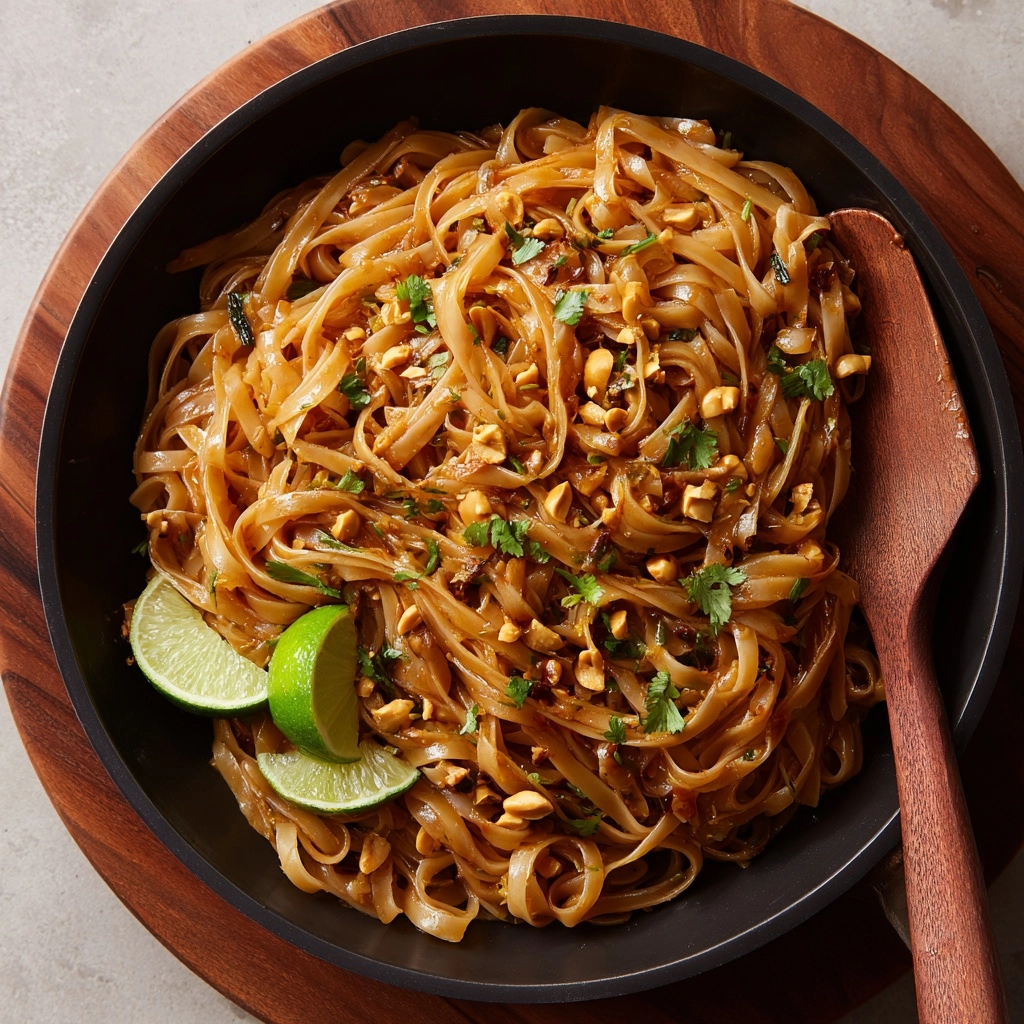
Garnishes
Don’t skip the garnishes! A generous sprinkle of roasted peanuts and fresh cilantro add crunch and herbal freshness every time. Lime wedges on the side let each person customize their own citrus kick—one squeeze and the dish literally brightens before your eyes. For extra pizzazz, toss a few extra bean sprouts or thinly sliced green onions on top.
Side Dishes
You can absolutely serve Vegetable Pad Thai as a standalone meal, but it also pairs beautifully with a simple cucumber salad, tangy pickled veggies, or a bowl of steaming miso soup. If you’re feeling decadent, try some crispy spring rolls or Thai iced tea on the side to complete your spread.
Creative Ways to Present
For a fun twist, serve the noodles family-style from a big platter in the middle of the table, letting everyone scoop their own. Or, portion the Vegetable Pad Thai into individual bowls with a pyramid of fresh sprouts or even edible flowers on top for a colorful, Instagram-worthy finish. You can also use lettuce cups for a playful, hand-held version—just pile in the noodles, sprinkle on the goodies, and wrap!
Make Ahead and Storage
Storing Leftovers
Leftovers are a total treat when handled right! Place extra Vegetable Pad Thai in an airtight container and refrigerate promptly. The flavors actually deepen overnight, making this perfect for lunch the next day. Eat within three days for best consistency.
Freezing
Vegetable Pad Thai can be frozen, but keep in mind some veggies might soften a bit on thawing. For best texture, freeze without garnishes and add fresh cilantro and peanuts after reheating. Store in freezer-safe containers for up to one month, and thaw overnight in the refrigerator before reheating.
Reheating
For the tastiest results, reheat noodles gently in a skillet over low heat with a splash of water to loosen things up. If you’re short on time, the microwave works too—just heat in short bursts while stirring often. Always add garnishes right before serving to keep everything crisp and fresh.
FAQs
Is Vegetable Pad Thai gluten free?
It absolutely can be! Just ensure you’re using gluten-free soy sauce or tamari instead of traditional soy sauce, and double-check that your noodles are gluten free as well.
Can I add tofu for extra protein?
Yes! Add cubed, pan-seared tofu when cooking the veggies if you’d like even more plant-based protein. Edamame is another great, easy toss-in.
I don’t have tamarind paste—what’s the best substitute?
No problem. Try swapping in a mix of rice vinegar and extra lime juice; the flavor won’t be identical, but you’ll still get that essential tang.
How do I make this dish spicier—or milder?
Simply adjust the sriracha to your liking, or offer extra on the side so everyone can spice it up (or down) as they wish.
Can Vegetable Pad Thai be made vegan?
Absolutely—just omit the eggs or use your favorite plant-based egg substitute. The sauce and veggie combo are naturally vegan once you make that swap.
Final Thoughts
Vegetable Pad Thai is the kind of recipe that begs to be shared, tweaked, and revisited again and again. With its satisfying flavors, gorgeous colors, and easy adaptability, it’s sure to win a spot in your regular meal rotation. Gather your ingredients, embrace those vibrant veggies, and enjoy creating a homemade classic that really does taste better than takeout!
Print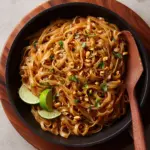
Vegetable Pad Thai Recipe
- Prep Time: 15 minutes
- Cook Time: 10 minutes
- Total Time: 25 minutes
- Yield: 4 servings
- Category: Main Course
- Method: Stir-Fry
- Cuisine: Thai
- Diet: Vegetarian
Description
A delicious and easy-to-make Vegetable Pad Thai recipe that brings the authentic flavors of Thai cuisine to your table. This vegetarian dish is packed with colorful veggies, rice noodles, and a tangy-sweet sauce, making it a perfect main course for any day of the week.
Ingredients
Rice Noodles:
8 oz rice noodles
Sauce:
3 tablespoons soy sauce, 1½ tablespoons tamarind paste, 1 tablespoon brown sugar, 1 tablespoon lime juice, 1 teaspoon sriracha (optional)
Vegetables:
2 tablespoons vegetable oil, 2 cloves garlic (minced), 1 cup shredded carrots, 1 red bell pepper (thinly sliced), 1 cup bean sprouts, 2 green onions (sliced), 2 eggs (lightly beaten)
Garnish:
¼ cup roasted peanuts (chopped), 2 tablespoons chopped cilantro, lime wedges for serving
Instructions
- Cook the Rice Noodles: Prepare rice noodles according to package instructions, rinse, and set aside.
- Make the Sauce: Whisk together soy sauce, tamarind paste, brown sugar, lime juice, and sriracha in a bowl.
- Stir-Fry: Heat oil in a skillet, add garlic, then eggs. Stir in carrots, bell pepper, and green onions. Toss in noodles and sauce, mix well.
- Finish: Add bean sprouts, garnish with peanuts and cilantro. Serve with lime wedges.
Notes
- You can use rice vinegar instead of tamarind paste.
- For extra protein, consider adding tofu or edamame.
- Adjust the spiciness by varying the amount of sriracha used.
Nutrition
- Serving Size: 1 plate
- Calories: 410
- Sugar: 8g
- Sodium: 680mg
- Fat: 15g
- Saturated Fat: 2g
- Unsaturated Fat: 11g
- Trans Fat: 0g
- Carbohydrates: 55g
- Fiber: 4g
- Protein: 12g
- Cholesterol: 70mg

